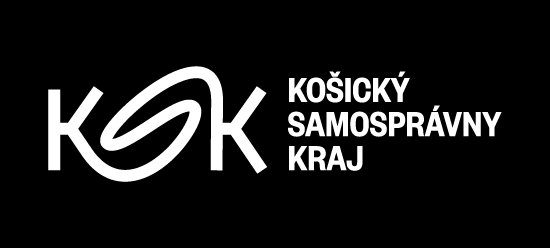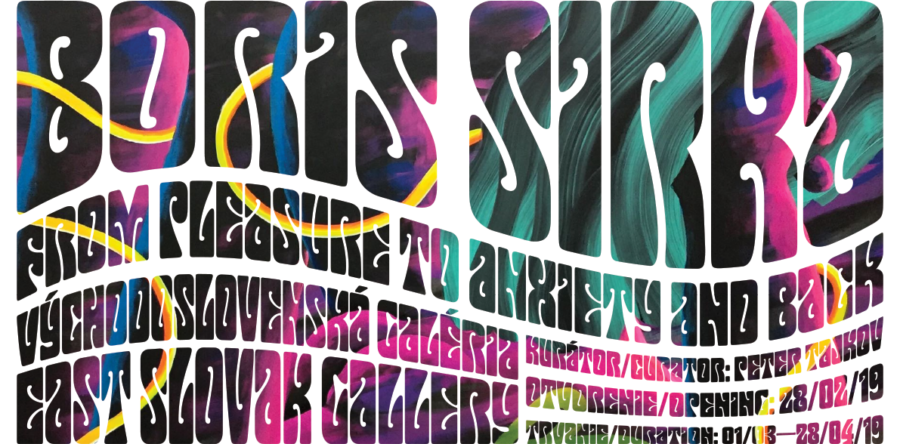opening: February 28, 2019, 6 p.m.
duration: March 1, 2019 – April 28, 2019
East Slovak Gallery, Hlavná 27, Košice
curator: Peter Tajkov
If there is anything that could generally characterize the artwork of Boris Sirka, then it is diversity – a varied and wide repertoire of artistic forms, genres and media. He works in time cycles while employing various types of artistic expression, abandoning the general idea of an authorial style. Instead, the author brings forward an emphasis of time compression, which motivates the opening and closure of his artistic cycles. Meanwhile, the sole constants, which are traceable in all of his works, are feverish ardour escorting new beginnings, as well as anxiety surrounding impermanence and death. Experiments with form and artistic strategies are a natural part of the artistic expression of the majority of young artists. Through experimental research they aim to reach an adequate, satisfactory, as well as well-accepted authorial style. However, Sirka’s experiments cannot be regarded as a means but as an aim of his artistic expression. Apart from the time factor, another typical feature of the artist’s attitude is his positioning at the crossroads of the artistic world featuring manifold means and directions. His work exudes a general unease about his inability to explore all of these within the restricted given time. In fact, this attitude does not need to be questioned – contemporary art is often perceived as a dynamic and ever-changing organism, which is powered by enormous multimedia production and expands beyond its traditional borders. Therefore, despite the fact that Sirka primarily works with traditional artistic media, he often draws inspiration from the audio-visual environment, which evolves much faster than painting or drawing.
Accentuated temporality, sensitivity towards new challenges and an inner irritation ignited by the threat of losing new impulses and therefore also creativity – all of these references link the author to the present world. He comments on it despite his inward-looking perspective and his commentary is paradoxically often more appropriate than participatory or socially engaged art. This attitude towards life and art is aptly reflected in the term ‘hypermodernism’ defined by Gilles Lipovetsky (e.g. Les temps hypermodernes, 2004). The postmodern hic et nunc has transformed into the requirement of constant anticipation, planning and perception of future challenges. Contemporary experience leads from indulgence to anxiety and bears a great number of paradoxes and ambivalence (such as today’s hygienic hedonism), while retaining the current value system. In this vein, Sirka approaches all forms of his artistic expression with precision and total commitment. At the same time, this attitude requires a lot of determination and often leads to alternation between artistic strain and exhaustion. In addition, it also demands that the artist steel himself against the critical reaction of the audience, which traditionally requires a clear continuity. Boris Sirka has already become known during his studies at the Faculty of Arts of the Technical University in Košice, where he attended the art studio of Rudo Sikora. He belongs to the strong generation of Košice graduates who after the millennium expressively entered and established themselves on the artistic scene. In this period, Sirka’s early artwork was characterised by an extraordinary talent for drawing, which later developed into a line-based style of painting inspired by B-horror movies, comics, pornography and death metal. The drilled craftsmanship of his painting style soon attracted commercial success and the attention of collectors. In order to leave this path and abandon a successful artistic mode, Sirka had to show a great deal of courage, which was also motivated by an anxiety of falling into an artistic routine. In the following cycle of paintings he employed lines which did not lock individual colours but gained freedom through dissolving acrylic paint in water and populating the canvas with disturbing figures. Although the artist’s commercial success has declined, he has never re-adopted the style of his early career. The narratives of his paintings gave way to simpler symbolic forms.
Sirka’s current paintings represent the most radical diversion from his previous artwork. He constructs monumental figures, whose almost sculptural disposition and petrified abstract gestures are lined by fluorescent colouring. However, these works are also based on an authentic artistic experience – for several years the artist accompanied his paintings with sculptural production (my own pedagogical practice confirms the importance of a painter’s tactile experience of subjects). A deeper insight into Sirka’s artwork therefore suggests that the apparent discontinuity is only superficial. Each new cycle of paintings absorbs the ideas of those prior and his rich repertoire of forms is based not only on external stimuli, but also draws from his own portfolio. The ability to confront and convincingly tackle these metamorphoses elevate Sirka to a position among the unique figures of the Slovak artistic scene.
Peter Tajkov



